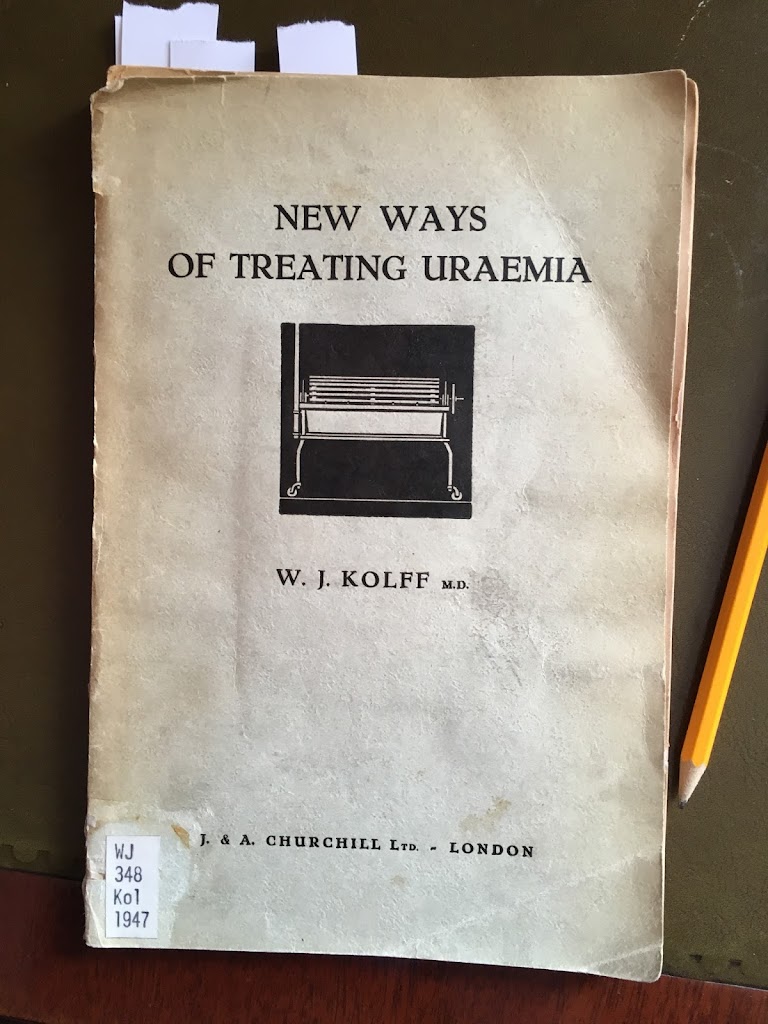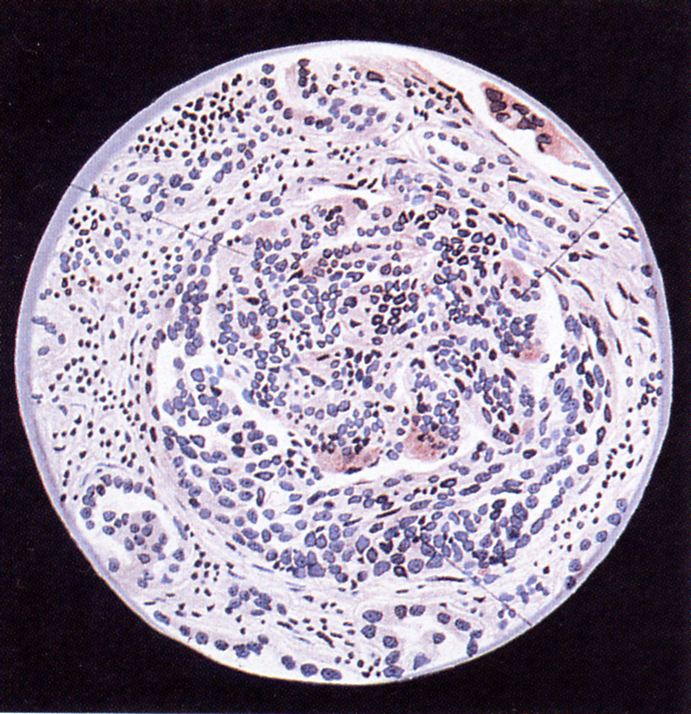-
New ways of Treating Uraemia, 1947

Kolff reflects on four available techniques This fascinating 1947 book of just over 100 pages gives Willem ‘Pim’ Kolff’s own, fuller, more reflective account of the development, testing, and first successful use of haemodialysis. Amazingly, this was achieved while working away from academic centres in Nazi-occupied Holland. The first 10 pages summarise previous work on…
-
Bright’s disease 100y after Bright

The last decade of purely clinical observation Acute glomerulonephritis with crescent formation – Volhard and Fahr 1914(one of the last renal pathology works with artwork rather than photographs) Arthur Ellis’s 1942 articles on Bright’s Disease summarised a truly impressive 20 year systematic recording of 600 patients with kidney disease at the London Hospital, followed up…
-
Diets for chronic uraemia
1949-1993: Addis to Giovannetti It didn’t work for her: a 46 year old female patient who stopped her diet. Note that it was lowering urea but not creatinine. From Shaw et al 1965, by kind permission of OUP. Low protein diets were shown to prolong the life of uraemic rats in experiments in the 1930s,…
-
Diet for acute renal failure in the 1940s
The beginning of the multidisciplinary renal team In 1949 Thomas Addis described the anarchy that existed in recommendations for the management of acute glomerulonephritis. He argued for protein restriction, as was becoming accepted for chronic uraemia, but it was in acute renal failure (ARF, or AKI) that real progress was being made. An Edinburgh diet…
-
Bombs, earthquakes and rhabdomyolysis
Seventy years ago the Battle of Britain led to recognition of a new disease and to important discoveries about acute renal failure The Blitz, East London September 1940 (Wikimedia Commons) In the Summer of 1940, the German Luftwaffe switched its bombing targets from English airfields and aircraft factories to cities, and in September 1940…
-
The unsung story of early peritoneal dialysis
The first successful mode of dialysis for acute renal failure and still not replaced The beginnings of haemodialysis have been described many times, but the first successful peritoneal dialysis probably antedated the first successful haemodialysis by 7 years. Peritoneal dialysis was undertaken alongside haemodialysis in most renal units from the early 1960s, but also in…
-
Haemodialysis was first used successfully in 1945
Willem (‘Pim’) Kolff’s remarkable achievement Kolff is famously the man who first put the developing theory of therapeutic dialysis into successful practice in the most unlikely circumstances, in Kampen in the occupied Netherlands during World War 2. Influenced by a patient he had seen die in 1938, and in a remote hospital to avoid the…